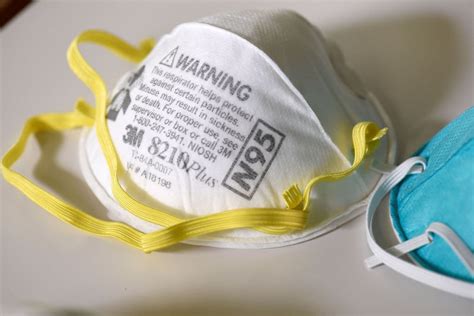N95 masks have often been touted as one of the most effective personal protective equipment (PPE) available in the fight against COVID-19, and new findings from a study conducted at the University of Maryland (UMD) seem to solidify this claim. The research published investigates the efficacy of various types of masks, particularly focusing on the duckbill N95 mask’s ability to block large and small virus particles. This study comes at a pivotal moment, as multiple other types of masks have come under scrutiny for their efficacy, or lack thereof, in preventing viral transmission.
The study finds that duckbill N95 masks effectively block 99% of large virus particles and 98% of smaller ones. This high filtration efficiency is critical because the size of the virus particles can affect how quickly and easily they are transmitted through the air. However, the core issue has always been about the fit and long-term wear habits of the mask, rather than the material itself being ineffective. Masks like KF94s, KN95s, and FFP2 masks have proven to be strong alternatives, especially for the general population. Yet, the stringent occupational requirements for N95 masks highlight a gap in accessibility and usability across different user groups.
One common misconception is that masks are primarily designed to prevent the wearer from getting sick. This has been a central part of the public debate, as illustrated in various comments and personal anecdotes shared online. Yet, the primary function of masks like the N95 is to limit the transmission of the virus from the wearer to other individuals. In hospital settings, where N95 masks are regularly used, this dual-purpose is crucial for protecting both the healthcare workers and their patients. Misconceptions continue to persist, with some individuals dismissing the importance of proper mask usage entirely.
Critics argue that the study’s title was misleading, stating that all N95 masks were nearly perfect at blocking COVID, whereas the results emphasized the specific efficacy of duckbill N95s. It’s essential to remember that scientific precision matters greatly, especially when communicating findings to the public. Misleading titles can fuel distrust of scientific institutions and lead to public confusion. Differentiating between the N95 and KN95 certifications is vital in this context. While both have similar filtration efficiencies, the fit and certification standards vary significantly between the United States and China.
A practical guide on how to wear an N95 mask correctly would include steps like fitting the mask snugly against the face, adjusting the metal nose piece, and checking the seal by exhaling forcefully. Masks failing the fit test should not be used, as air leakage dramatically reduces their protective capability. Interestingly, the subtle nuances of mask layers, including an electret layer with a permanent electric field, trap smaller particles effectively. A detailed instructional video from OSHA can be invaluable for people struggling with achieving a proper fit.
The public health initiative surrounding mask usage was intended to incentivize widespread adoption to flatten the curve of the pandemic. Nonetheless, the initiatives faced delays and inconsistent messaging, especially compared to other nations that took a stricter approach. The effectiveness observed in other countries was partly due to better public compliance and the use of higher-standard masks. It’s argued that the US’s less stringent approach resulted in higher transmission rates.
Furthermore, masks like the P100 that even exceed N95 standards offer another layer of protection, albeit with decreased comfort and increased cost. As we’ve navigated through the pandemic, personal anecdotes suggest a higher compliance rate among wearers of more robust masks like N95 and P100 who have avoided falling sick, even during high transmission periods. This aligns with the study’s broader conclusions and gives empirical support to the testimonial evidence.
Ultimately, the debate over mask efficacy is more complex than a simple binary of ‘effective’ or ‘ineffective.’ The nuances of mask fit, proper user guidance, mask material, and public compliance all contribute to the overall effectiveness of masks. Yet, one fact remains clear: wearing a mask significantly reduces the risk of COVID-19 transmission, whether you’re the one wearing it or you’re around someone else who is. With over four years of firsthand experiences, personal testimonies, and rigorous scientific studies, we can reasonably conclude that committing to proper mask usage can be a pivotal tool in combatting this and future pandemics.


Leave a Reply